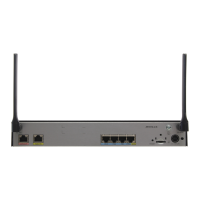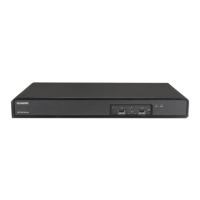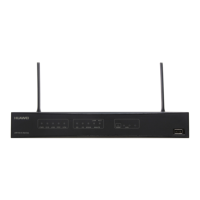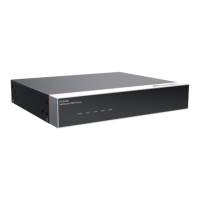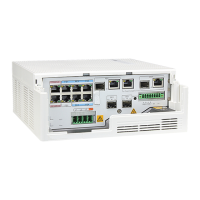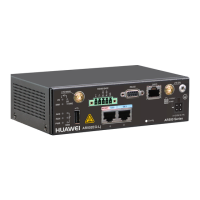<Huawei> display voice service-mode
The voice service mode is SIPAG
1.4 Configuring a SIP AG Interface
This section describes how to configure a SIP AG interface.
1.4.1 Establishing the Configuration Task
Before configuring a SIP AG interface, familiarize yourself with the applicable environment,
complete the pre-configuration tasks, and obtain the data required for the configuration. This
will help you complete the configuration task quickly and accurately.
Applicable Environment
On the IMS, when a media gateway controller (MGC) and a SIP AG exchange media and
signaling streams, set the media and signaling IP addresses, signaling port number, and
transmission protocol on the SIP AG.
Pre-configuration Tasks
Before configuring a SIP AG interface, complete the following task:
l Configuring the AR1200 to work in SIP AG mode
Data Preparation
To configure a SIP AG interface, you need the following data.
No.
Data
1 Media and signaling IP addresses
2 SIP AG interface number, media and signaling IP addresses, signaling port number,
IP addresses and port numbers of primary and secondary proxy servers, transmission
protocol, and home domain name
1.4.2 Configuring Media and Signaling IP Address Pools
Media and signaling IP address pools provide media and signaling IP addresses for SIP AG
interfaces.
Context
A SIP AG interface must obtain media and signaling IP addresses from media and signaling IP
address pools respectively. The signaling IP address pool stores IP addresses of SIP AG
interfaces and the media IP address pool stores IP addresses of media streams. Media streams
and signaling streams can use the same IP address.
Huawei AR1200 Series Enterprise Routers
Configuration Guide - Voice 1 SIPAG Configuration
Issue 03 (2011-09-30) Huawei Proprietary and Confidential
Copyright © Huawei Technologies Co., Ltd.
7
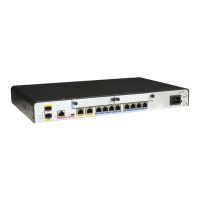
